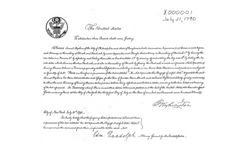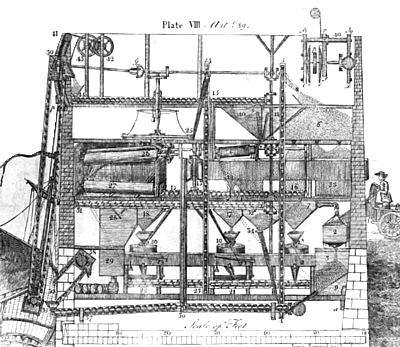It’s time to turn over a bright, shiny new leaf and to make hopeful resolutions with the best of intentions. Your Faithful Narrator’s thoughts turn to a shiny new beginning of the distant past – to the year 1790, only three years after the Founders hammered out the new U.S. Constitution and one year after the Constitution was ratified by the largely independent states.*
The new Constitution including the visionary Patents Clause**, at Article 1, Section 8:
The Congress shall have power… To promote the progress of science and the useful arts, by securing for limited times to authors and inventors the exclusive right to their respective writing and discoveries;…
The new government began operating on March 4, 1789, with Thomas Jefferson as Secretary of State. Under Jefferson’s leadership, the first Patent Act became law on April 10, 1790. Hopeful inventors wasted no time. The first U.S. patent was signed by President George Washington and issued on July 31, 1790 to Samuel Hopkins of Philadelphia for a method of manufacturing pearl ash (K2CO3) and potash, used in soap making, glass making, and chemical leavening of baked goods:
1st. by burning the raw Ashes in a Furnace,
2nd. by dissolving and boiling them when so burnt in Water,
3rd. by drawing off and settling the Sey[?], and
4th. by boiling the Sey into Salts which then are the true Pearl ash; and also in the making of Potash by fluxing the Pearl ash so made as aforesaid…
So the first U.S. patent was for a chemical process. In 1790, a total of three patents were issued – the second to Joseph Sampson of Boston for the manufacture of candles and the third to Oliver Evans of Philadelphia for the manufacture of flour and meal.
Most patent records were lost in a fire at the U.S. Patent Office in 1836, so there are many things about these and other early patents that we do not know. One thing that Your Narrator knows for certain, from long experience – these early inventors were seized with the creative spirit and excited to receive their patents and to launch their new endeavors. Then, as now, the U.S. patent system encouraged inventors to spend the time, treasure, and energy to identify problems to be solved and to solve those problems. The U.S. Patent Office has now passed eleven million issued patents and counting, so that excitement and creative spirit are undiminished.
* The shiny new Constitution provided that proportional representation in Congress would be based on each state’s free population plus ⅗ of the enslaved population, punting the issue of slavery for another 76 years.
** Copyright lawyers refer to Art. 1 Sec. 8 as the ‘Copyright Clause.’
— Robert Yarbrough, Esq.



